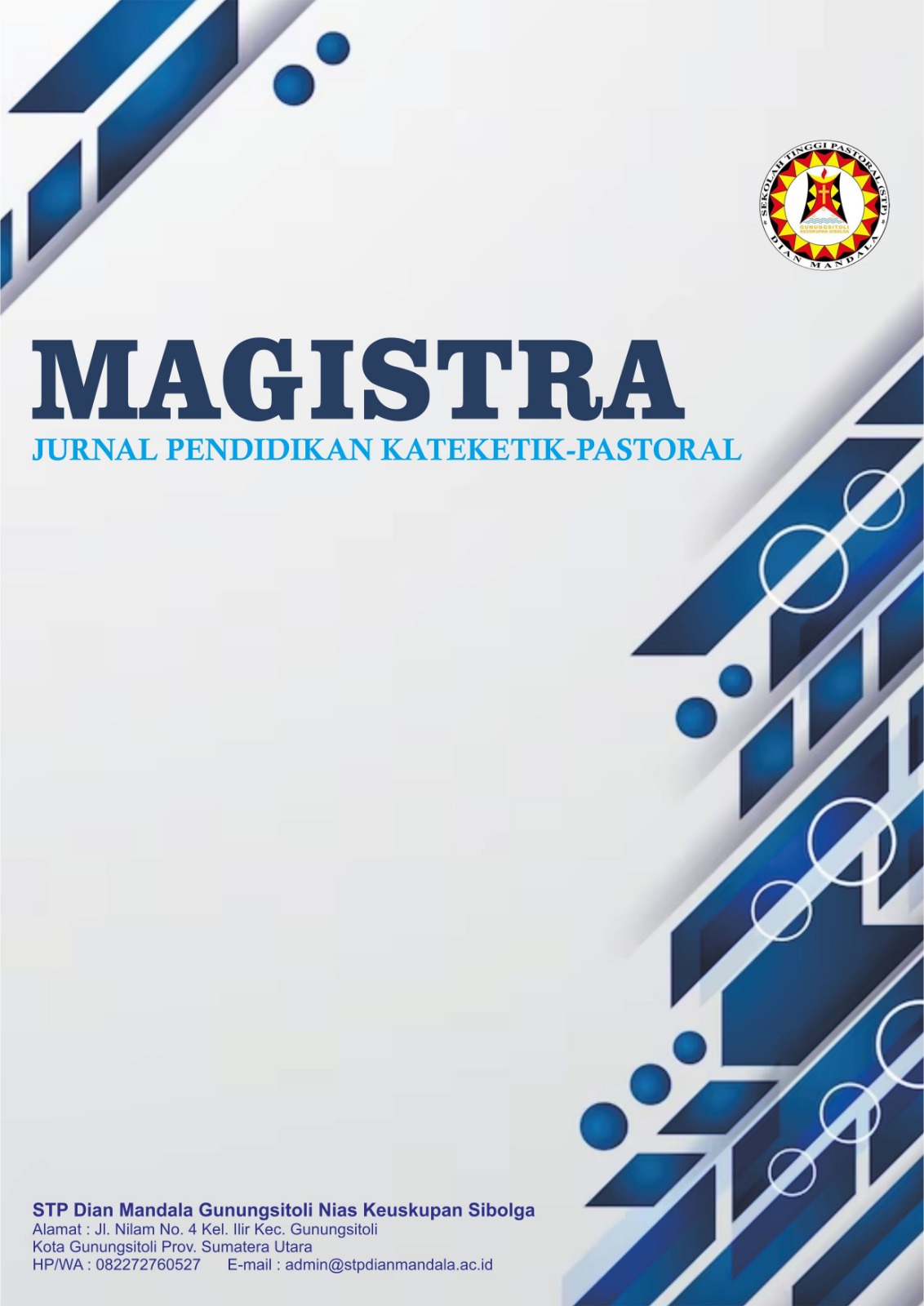Memahami Keheningan sebagai Persiapan Batin Umat dalam Mengikuti Perayaan Ekaristi
DOI:
https://doi.org/10.62200/magistra.v3i2.211Keywords:
Eucharist, Silence, SoulAbstract
In the celebration of the Eucharist, silence is an important element in liturgical celebrations. Liturgical silence is a means that sends people into the inner world where God is personally experienced. Silence is a time when people listen and absorb God's Word and bear fruit in their daily lives through words, actions and deeds. The author's purpose in making this scientific paper is to urge the people to maintain silence while participating in the Eucharistic Celebration, so that all people can prepare themselves and mind to follow and carry out the Eucharistic Celebration with a calm heart and mind. The method of writing this thesis is a literature review. This scientific work was compiled based on the author's concern about the lack of appreciation of the people in participating in the Eucharistic Celebration. It is undeniable that there are things that disturb the silence during the Eucharistic Celebration, such as the noise in the sacrament when the officers are preparing themselves, and the sound of mobile phones ringing. Therefore, before the Eucharistic Celebration, it is highly recommended that silence can be created, both in the church and in the area around the church. This paper recalls that silence can be created through prayer. And the most important thing in prayer is not to first seek what we want, but to be aware of the desire and inner movement that is driven by God Himself.
References
Bevans, S. B., & Schroeder, R. P. (2006). Constants in context: A theology of mission for today. Maryknoll, NY: Orbis Books.
Departemen Dokumentasi dan Penerangan KWI-Obor. (1993). Dokumen Konsili Vatikan II (R. Hardawiryana, Penerj.). Jakarta: Departemen Dokumentasi dan Penerangan KWI-Obor.
Hadisumarta, F. X. (2013). Ekaristi. Jakarta: Obor.
Jungmann, J. A. (2012). The Mass of the Roman Rite: Its origins and development (Missarum Sollemnia) (F. A. Brunner, Trans.). Notre Dame, IN: Christian Classics.
Katekismus Gereja Katolik. (2007). (Catechismus Catholicae Ecclesiae) (H. Embuiru, Penerj.). Ende: Nusa Indah.
Komisi Liturgi KWI. (2002). Pedoman Umum Misalae Romawi. Jakarta: Nusa Indah.
Konferensi Waligereja Indonesia. (2000). Iman Katolik. Yogyakarta: Kanisius.
Lukasik, A. (1991). Memahami Perayaan Ekaristi: Penjelasan tentang Unsur-unsur Perayaan Ekaristi. Yogyakarta: Kanisius.
Martasudjita, E. (2005). Ekaristi: Tinjauan teologis, liturgis, dan pastoral. Yogyakarta: Kanisius.
Martasudjita, E. (2012). Ekaristi: Makna dan kedalamannya bagi perutusan di tengah dunia. Yogyakarta: Kanisius.
Martinelli, R. (2014). Ekaristi roti kehidupan kekal. Jakarta: Obor.
Mello, A. de. (1993). Hidup di hadirat Allah. Yogyakarta: Kanisius.
Musakabe, H. (2011). Menuju hidup yang lebih Ekaristi. Jakarta: Citra Insan Pembaru.
Nayuf, H. (2006). Religiositas cinta Ibu Teresa dan realita dehumanisasi di Indonesia. Yogyakarta: Yayasan Pustaka Nusatama.
Ratzinger, J. (2007). The Spirit of the Liturgy (J. Saward, Trans.). San Francisco: Ignatius Press.
Sudrijanta, J. (2012). Titik hening: Meditasi tanpa objek. Yogyakarta: Kanisius.
Sugiyono, F. (2010). Mencintai liturgi. Yogyakarta: Kanisius.
Taft, R. F. (2000). Beyond East and West: Problems in liturgical understanding. Rome: Pontificio Istituto Orientale.
White, J. F. (2003). Introduction to Christian worship (3rd ed.). Nashville, TN: Abingdon Press.
Downloads
Published
How to Cite
Issue
Section
License
Copyright (c) 2025 Jurnal Magistra

This work is licensed under a Creative Commons Attribution-ShareAlike 4.0 International License.











